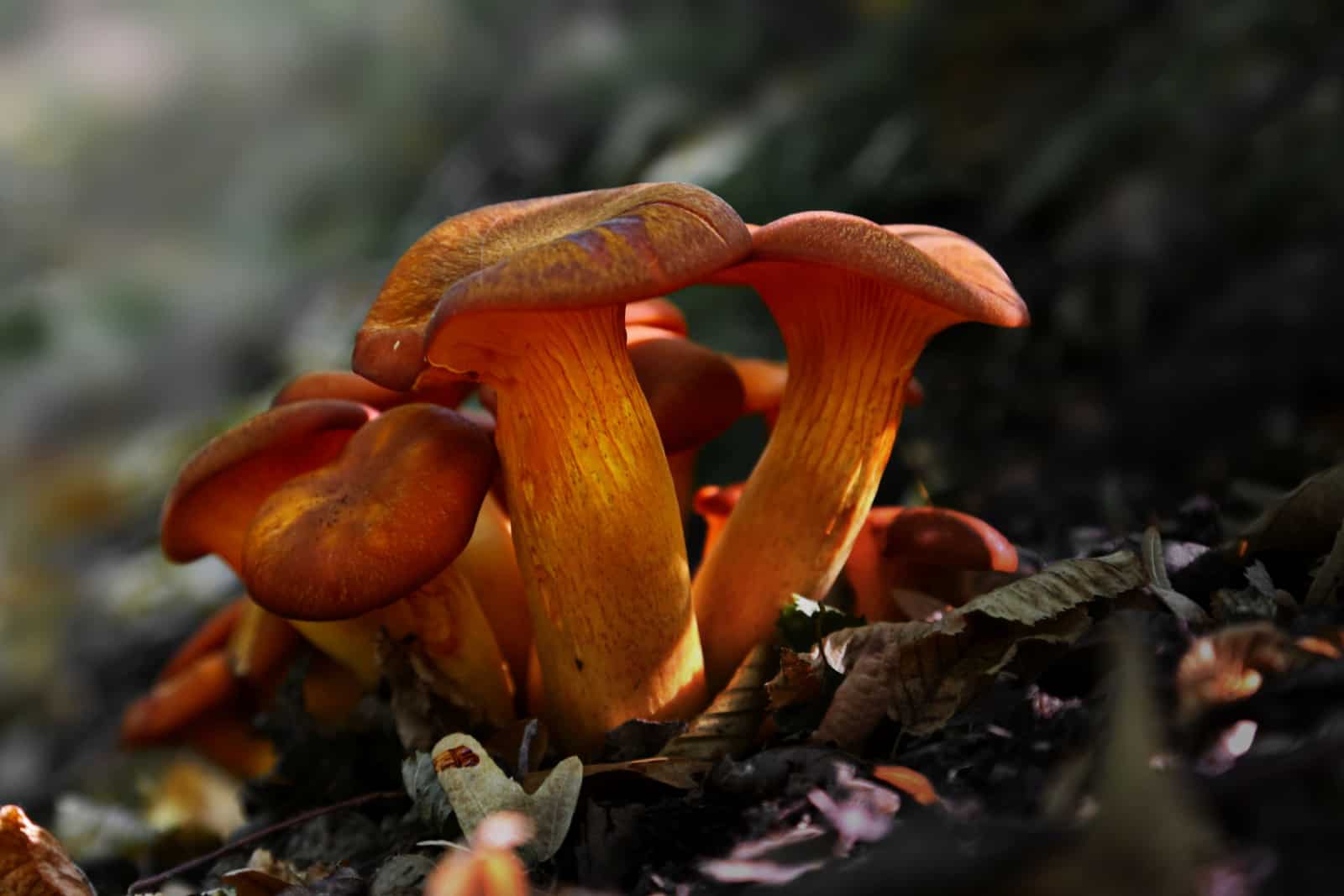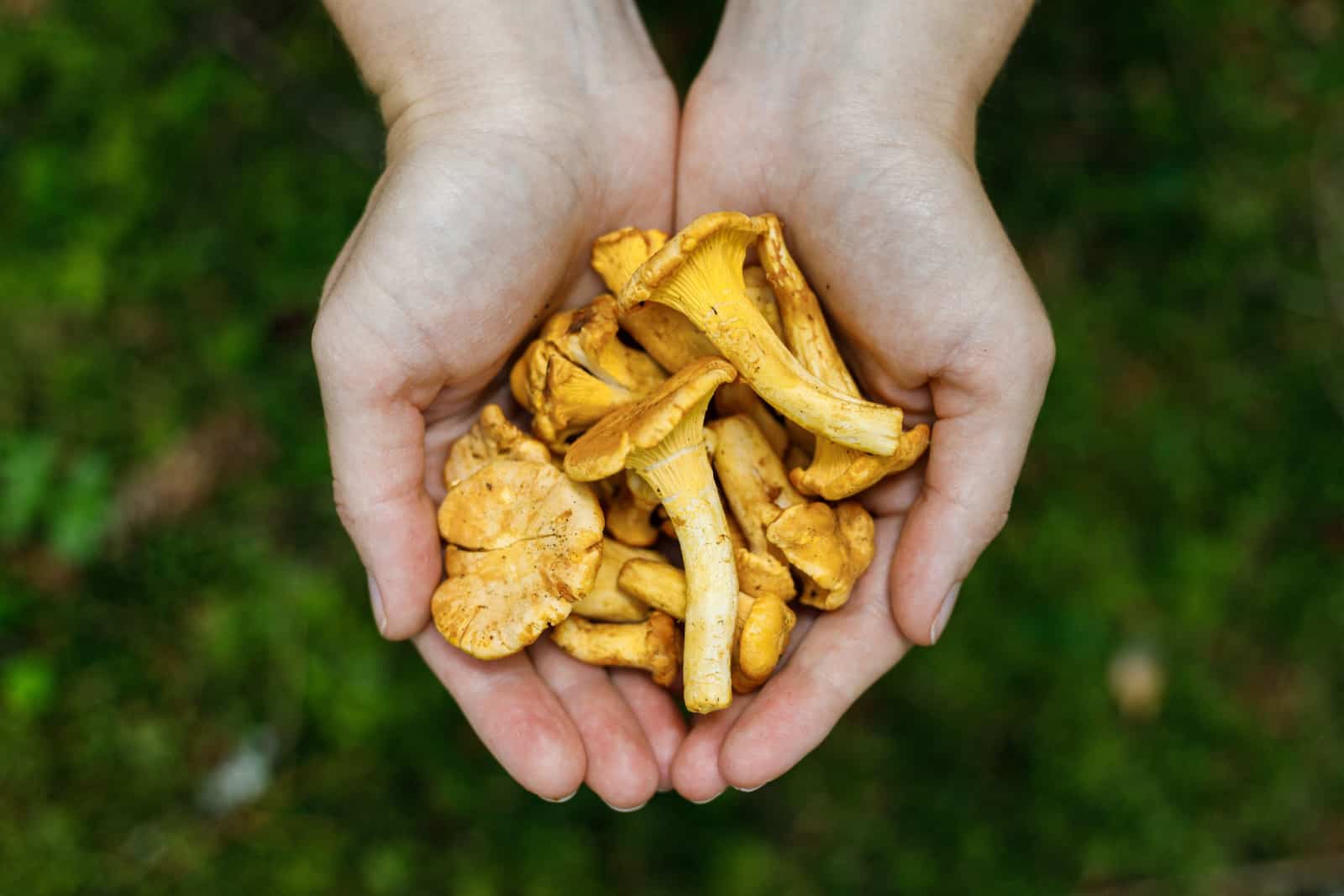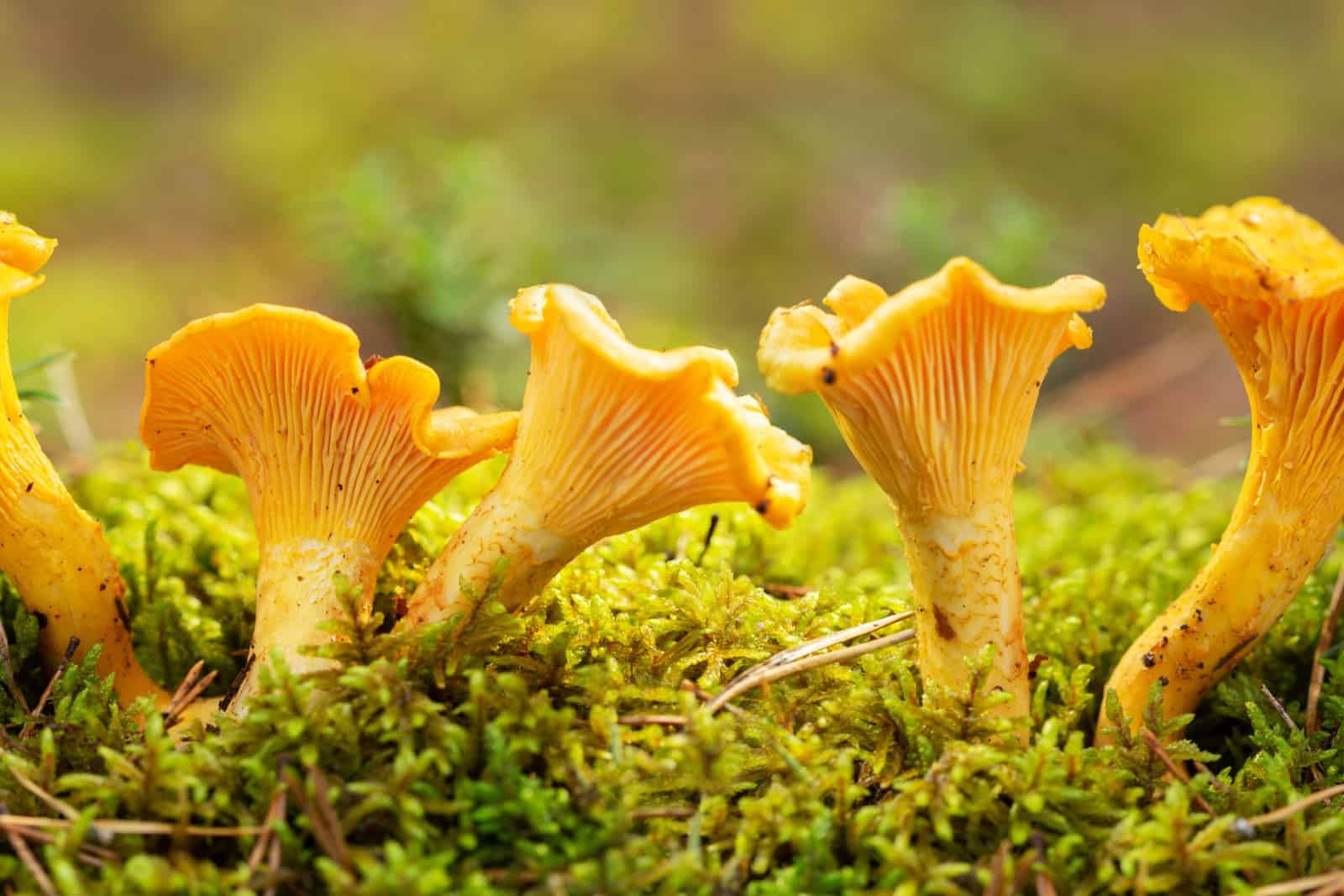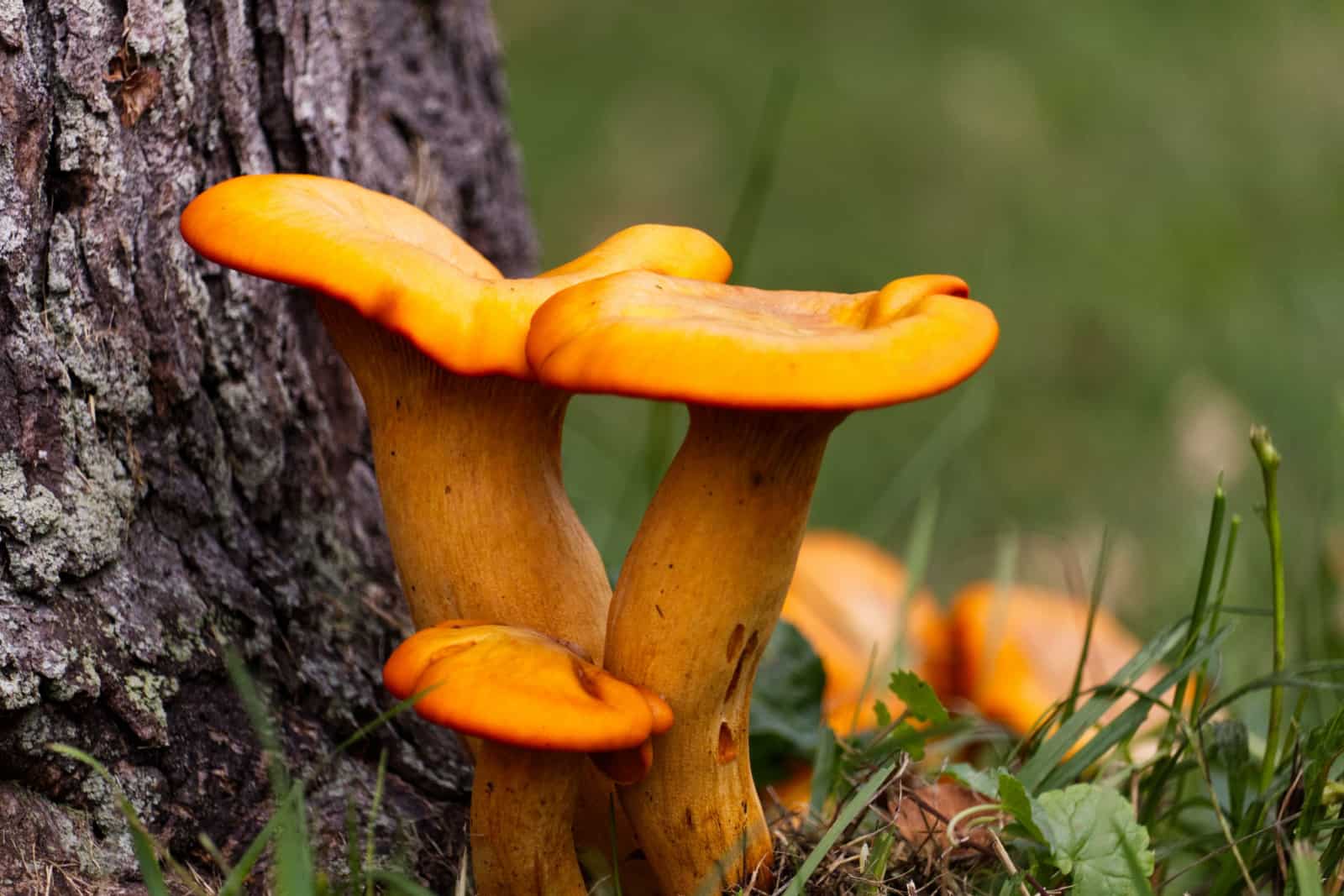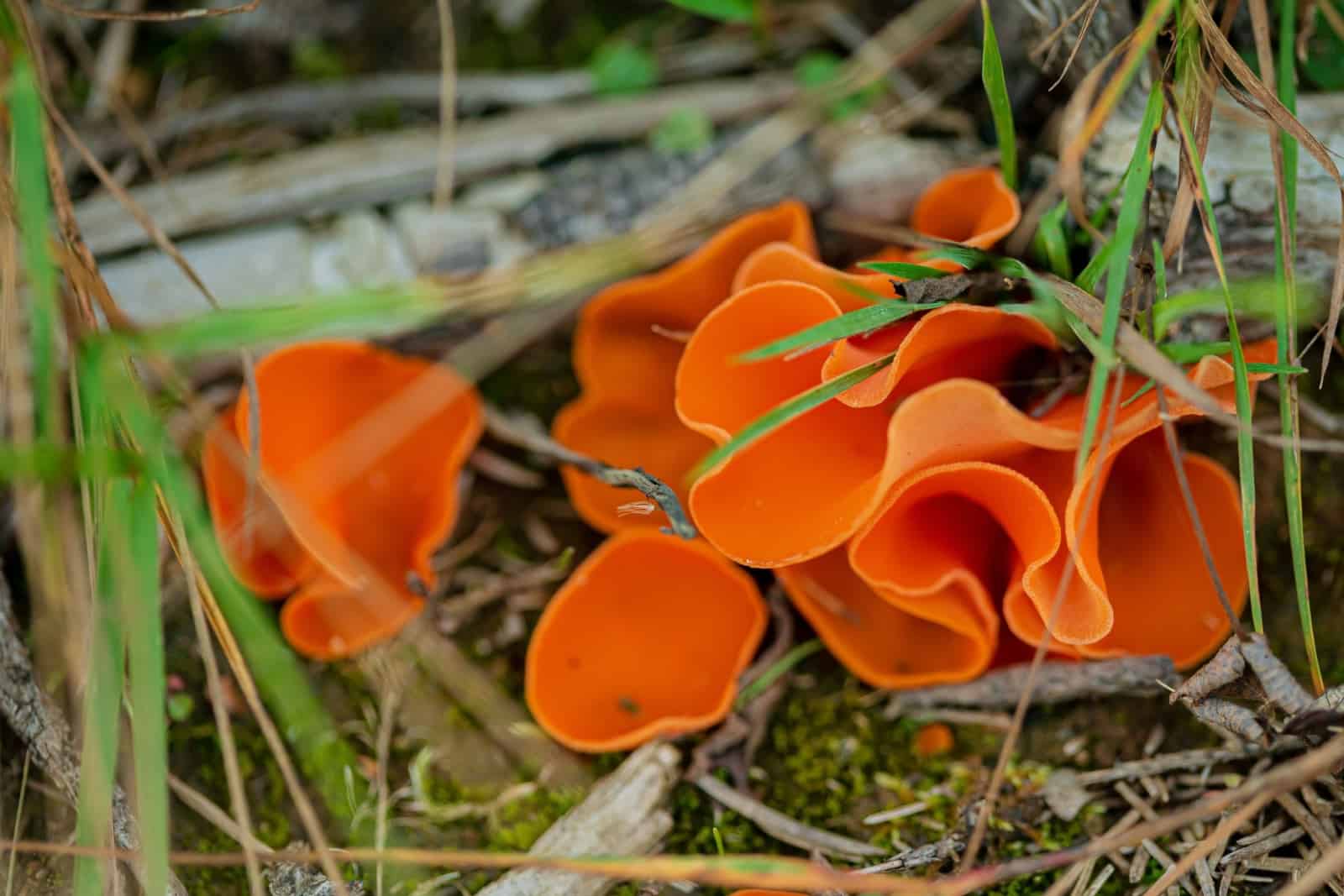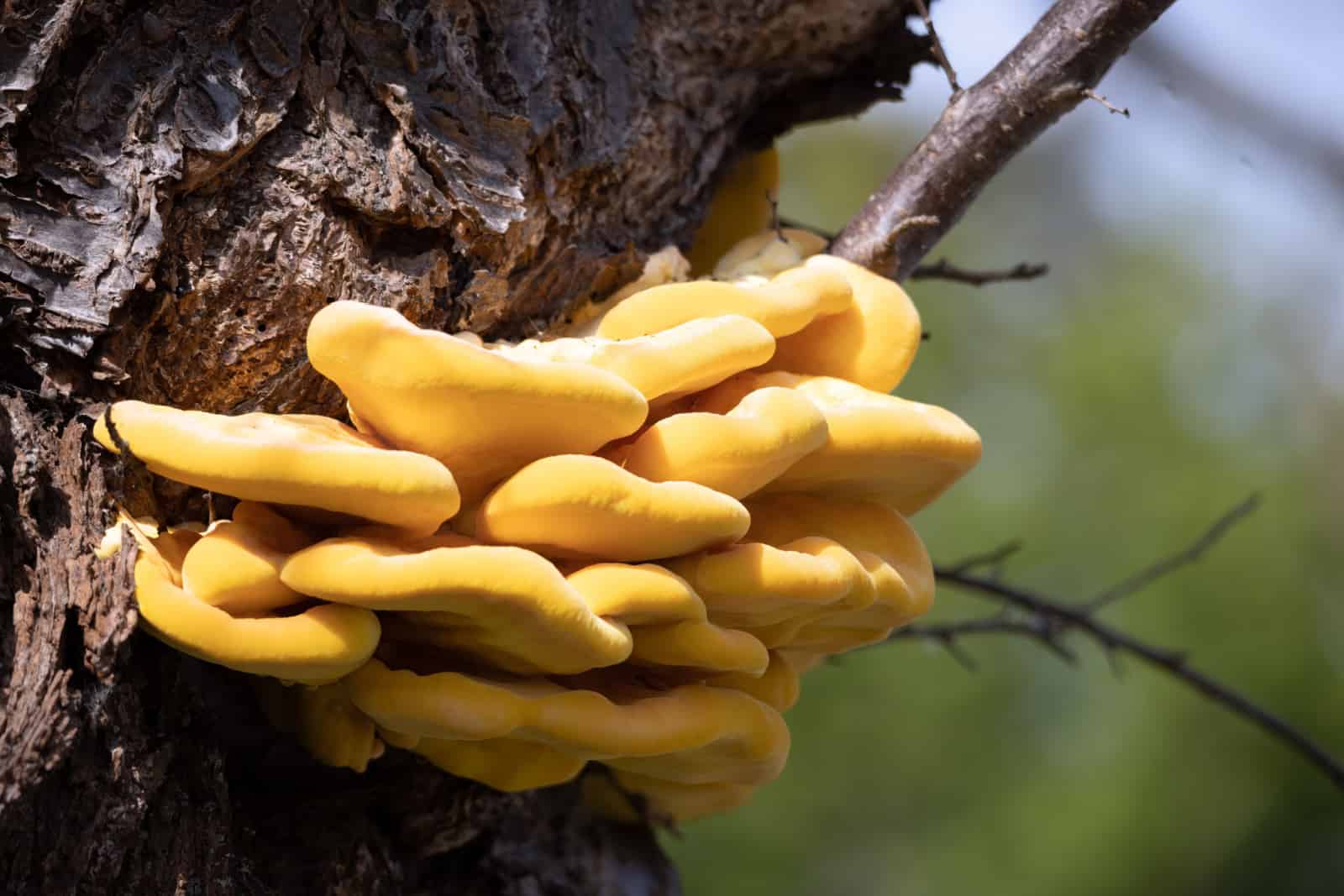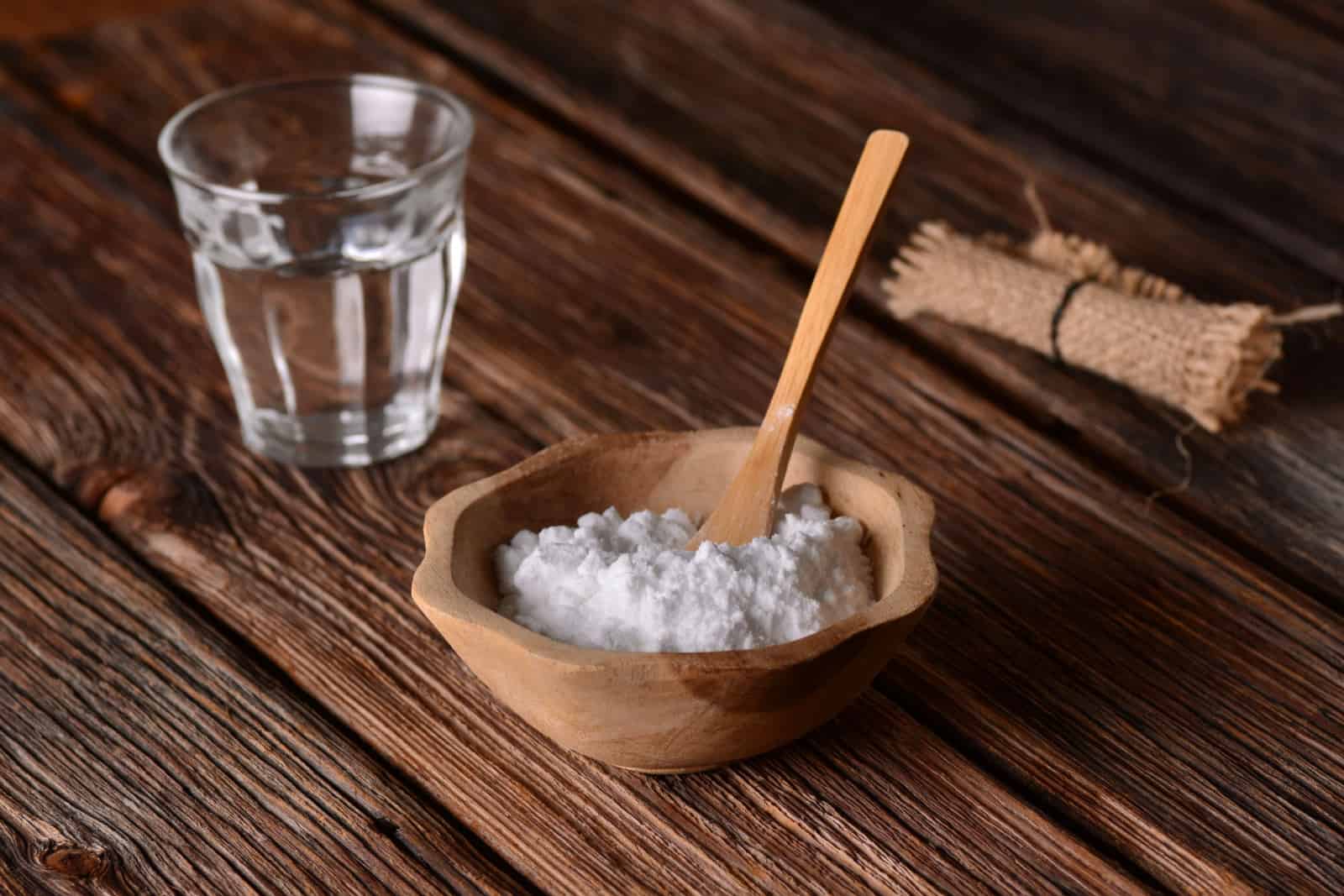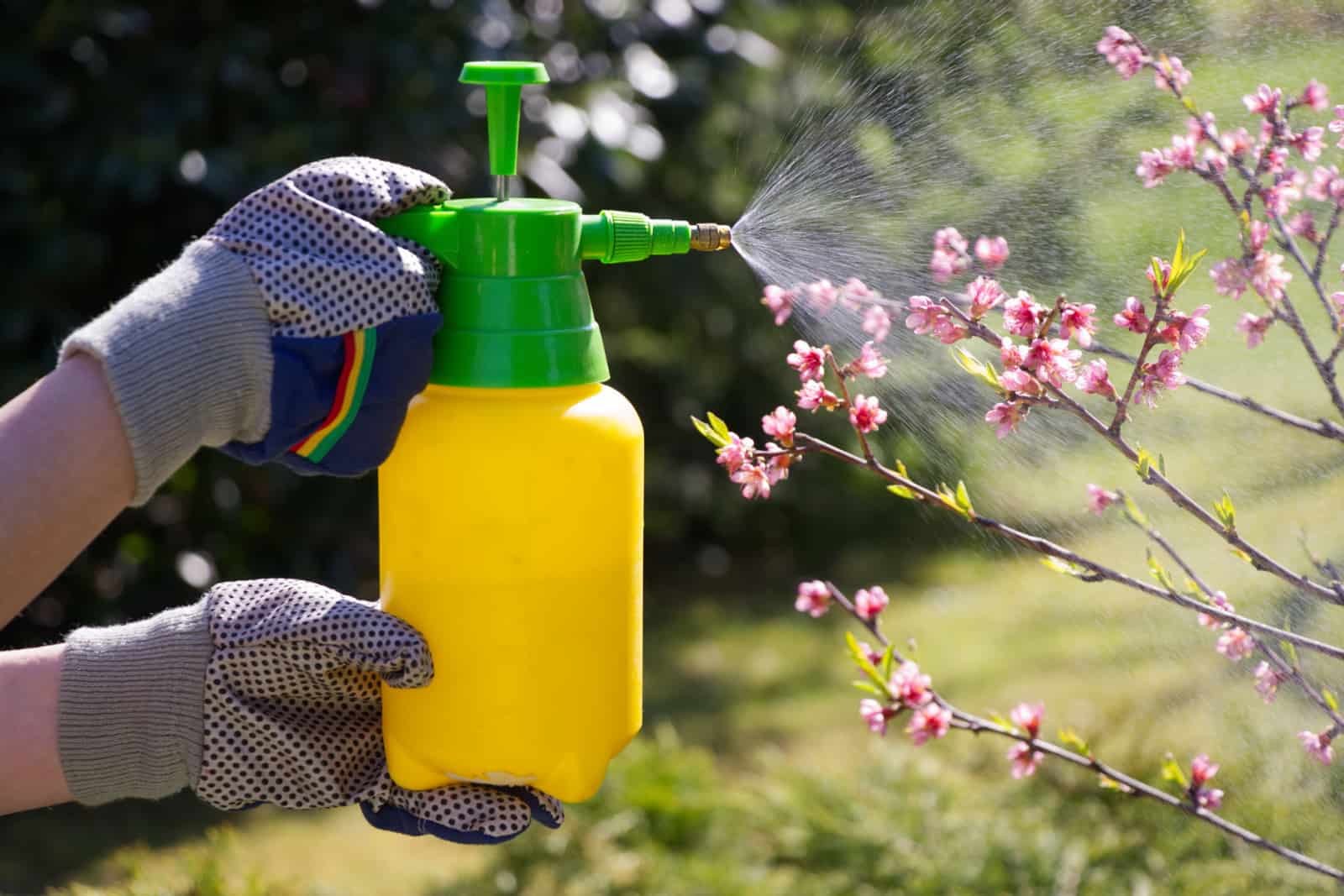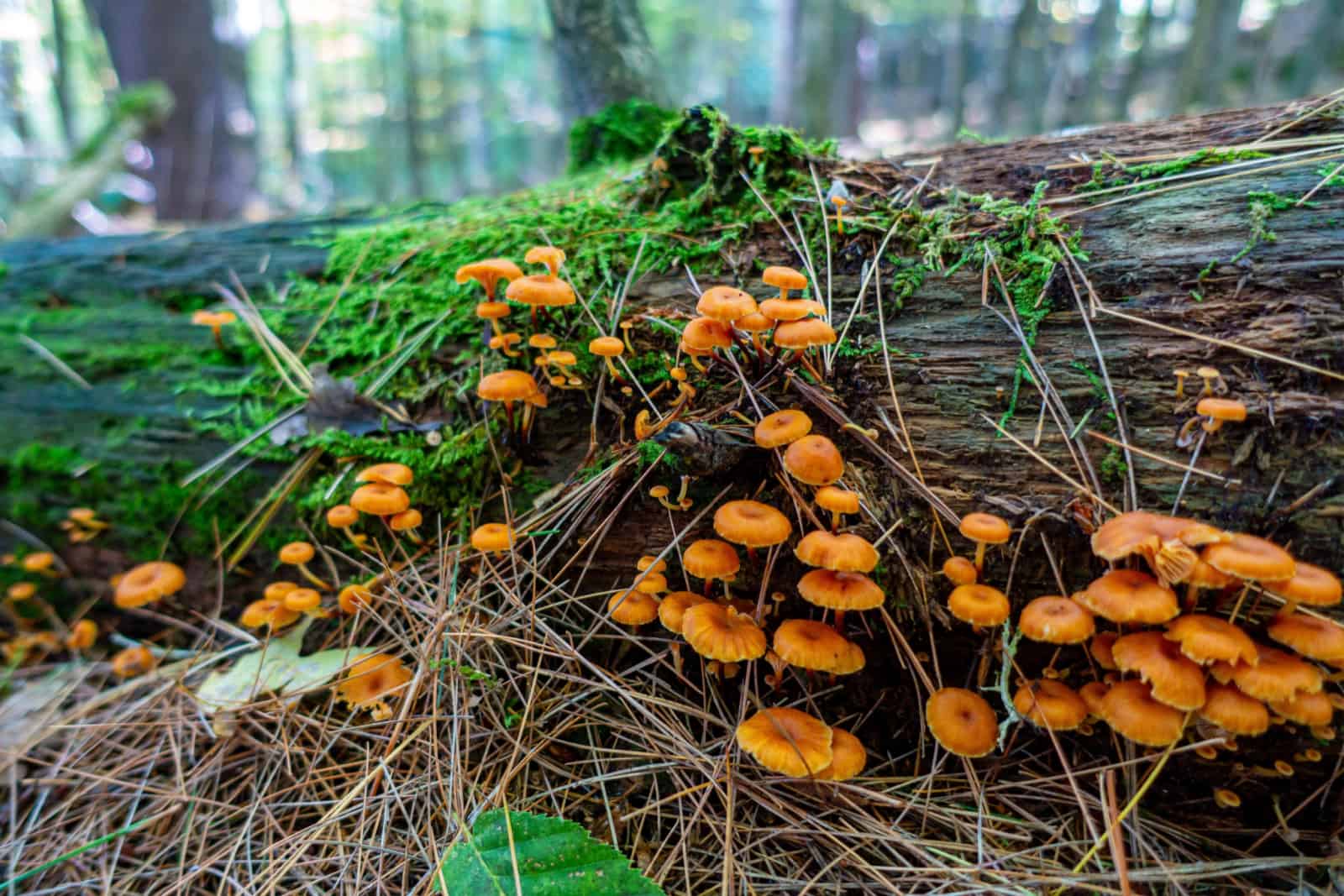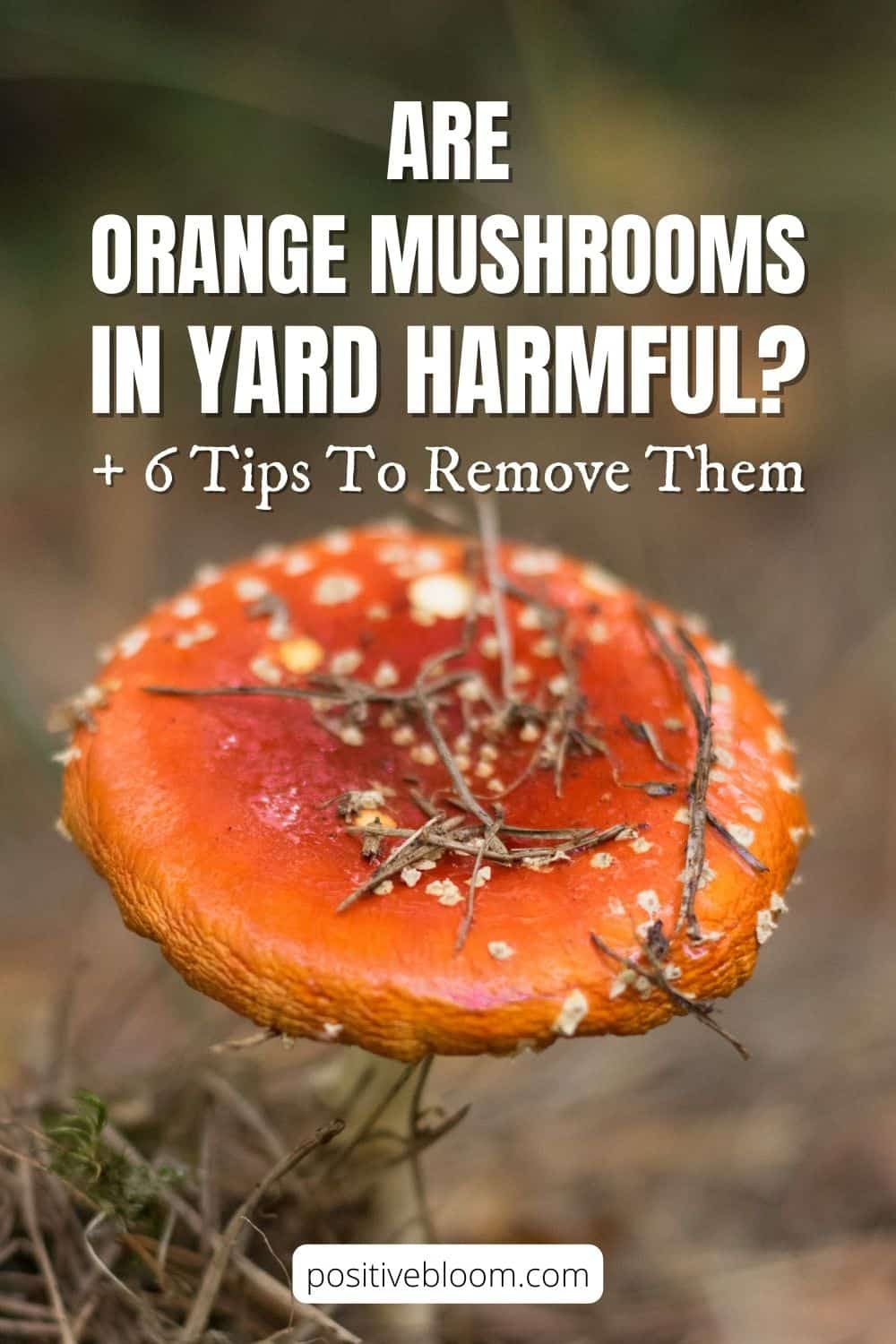Mushrooms have many benefits; they decompose organic matter, are edible, etc. But not all of them are suitable for us and wildlife.
For instance, orange mushrooms in yard might look amazing, but are they harmful?
Well, certain varieties contain toxins that are better not ingested, and we’ll talk about this issue in the following sections.
This article contains many more things about these mushrooms, such as why they appear in the first place and how to get rid of them, so stick around to learn more!
Are Orange Mushrooms In Yard Harmful?
We already mentioned that mushrooms are decomposers, and the same goes for orange mushrooms. These varieties, such as orange peel fungus, are tertiary decomposers, and you can find them in proximity to mushrooms which help decompose the organic content quicker.
However, most of these orange mushrooms that grow on their own (without you having to plant them) are toxic and not suitable for eating.
One of the indicators that can help you avoid toxic mushrooms is their habitat. If they grow on decaying trees or stumps, they’re probably not suitable for eating. Some of them may be non-toxic and even suitable for eating, but most are considered inedible.
Why Do Orange Mushrooms Appear In Yards?
Mushrooms are basically fungi that live in your garden soil, but they don’t usually grow their fruiting bodies unless the conditions are perfect.
For instance, if your yard is rich in organic content and there’s just been rain, you can expect these tiny hatters to appear.
Of course, temperature and the season also influence the appearance and spread of orange mushrooms in your yard, and we’ll discuss these factors in the following section.
Factors That Influence Orange Mushroom Growth
The growth of orange mushrooms on lawns is encouraged by growing mediums rich in humus. But, they can also appear on decaying wood, bark, open land, etc. Therefore, it’s not surprising that your yard is just one of their preferred habitats.
Another factor that affects the occurrence of mushrooms is the season; some species appear at warmer times of the year, while other varieties prefer the winter.
Consequently, temperature plays a vital role in the growth and spread of mushrooms, but these are all things we cannot influence – the weather in particular.
However, one thing we can do is get rid of mushrooms’ favorite food source: dead trees. Of course, as the soil moisture and humidity decrease, orange mushrooms will disappear without a trace.
Another thing about mushrooms is that they can spread easily via spores, which soon develop a mycelium (mushroom root system), and their lifecycle begins anew!
Different Types Of Orange Mushrooms
Not all species of orange mushrooms are dangerous. For instance, chanterelle mushrooms aren’t poisonous, but they also don’t appear on their own (which is a shame).
But the good news is that you can find edible orange mushrooms that appear on their own, such as sulfur-shelf mushrooms.
However, you should take a mycologist with you if you know one, or at least a mushroom book to help you differentiate poisonous mushrooms from edible ones.
There are many varieties that are toxic to humans and animals, and you definitely don’t want to risk your health.
Chanterelle Mushrooms (Cantharellus Cibarius)
Chanterelle mushrooms have a characteristic twisted-funnel shape that we all recognize. They are usually bright yellow, but vary between lighter and darker shades. The stem of chanterelle mushrooms is somewhat paler than the cap.
The golden chanterelle is occurs naturally in Europe and thrives from Scandinavia to the Mediterranean Basin. However, there are other chanterelle varieties native to North America, some of which can be white, creamy, yellow, pink, and salmon-colored.
They appear most frequently in deciduous forests with many oak trees, but you can also find them in coniferous woods in mossy regions.
Chanterelles typically produce fruit from July to October, but if you live in warmer climates, you may enjoy these mushrooms even in November.
Jack-O-Lantern Mushroom (Omphalotus Illudens)
This one is the real baddie. Jack-o-lantern mushroom resembles chanterelle, and you can easily be mistaken if you’re not that well-versed in mushrooms.
The O. illudens grows in clusters on dead trees and is orange inside (unlike the white interior of chanterelles).
The jack-o-lantern mushroom contains illudin, a substance which can cause severe cramps, breathing difficulties, excess saliva, vomiting, diarrhea, etc. These issues usually appear about half an hour after consuming the mushroom.
Jack-o-lantern mushrooms are usually bright orange, but can also be a mixture of orange and olive green, based on the environmental conditions. The O. illudens variety is native to North America and commonly known as the eastern jack-o-lantern.
However, there is also the Omphalotus olearius, a variety that is native to Europe and South Africa, and Omphalotus olivascens, which can be found in Mexico and California. The latter variety also goes by the name the western jack-o-lantern.
Unfortunately, all these gorgeous mushrooms are poisonous, so stay away from them! At the very least, get a guide with pictures to help you distinguish them from chanterelles.
Orange Peel Fungus (Aleuria Aurantia)
This variety got its name from its unique appearance; its cap truly resembles an orange peel. And one of the good things about this variety is that it isn’t poisonous.
However, it doesn’t have any particular flavor, so most gourmands would take a cep or a shiitake over this one any day. It fruits in summer and fall and is typical of North American and European regions.
Orange peel fungus prefers clay soils or undisturbed land such as sides of paths, grass, wood edges, etc.
Sulfur-Shelf Mushrooms (Laetiporus Sulphureus)
We’ve all seen this mushroom at least once in our lifetime, but probably don’t know it by the same name. That’s because it’s been called chicken of the woods, crab of the woods, and sulfur polypore.
Luckily, it is very easy to identify; it grows in clusters that look like orange or yellow shelves on hardwood trees, such as cherry, oak, and maple. It can also grow on other varieties, including conifer, eucalyptus, and locust.
It must be noted that these mushrooms are only orange or yellow when young; they fade and become almost white as they grow older.
Sulfur-shelf mushrooms are edible, and their flavor might remind you of chicken when prepared. They’re rich in minerals and vitamins, and you shouldn’t be afraid of eating them.
However, it should be noted that they may cause allergic reactions in certain individuals when eaten raw, so make sure to cook them well before tasting!
How To Remove Orange Mushrooms From Your Yard
Now you know that not all orange mushrooms that may appear in your garden are harmful, but they may still taint the image of your landscape.
If you don’t feel like preparing them or want to bring your garden to its former glory, you can get rid of these species easily.
There are many helpful DIY methods you can try out, and the simplest one is picking them by hand. Of course, you can always remove these mushrooms from your yard using fungicides.
If you don’t feel like going to the store, you’ll be glad to hear that every home possesses the ingredients and materials necessary to get rid of orange mushrooms in yard.
1. Baking Soda
Baking soda is the number one ingredient and can be found in every home. You can use it in cooking, for a DIY pedicure, cleaning burnt grease from your ovens and stoves, killing moss on the tarmac, etc.
This ingredient increases the soil’s alkalinity and makes it unsuitable for mushrooms, and it only takes three days to destroy them.
Baking soda doesn’t kill, instead it changes the soil pH and inhibits mushroom growth. Dissolve two tablespoons of baking soda in a gallon of water and give your mushrooms a good soaking (or spraying).
You should use this method only in the areas where you grow plants that can tolerate alkaline soils, or you risk inhibiting the growth of other plants.
2. Dish Soap
Using dish soap is not as natural or fast as baking soda, but it’ll get the job done.Make a solution of dish soap with water, and you’re done. (We personally use 1-2 tablespoons of dish soap dissolved in three gallons of water.)
Make some holes around the mushrooms and pour the soap water over them and into the holes so that it can disrupt the fungi lifecycle underground and kill them before they emerge.
However, this method takes time, and you’ll have to irrigate your mushrooms with this solution a couple of times a day for a week before you see any decrease in the fungi numbers.
3. Fungicide
Using fungicides is the most effective way to kill mushrooms because they kill spores and prevent further spread.
However, most growers aren’t that inclined to use them as they may disrupt the balance of their gardens’ ecosystems.
The important thing is to find a fungicide suitable for the surrounding plants so that it doesn’t harm them. Then, mix it according to the instructions, transfer it into a spray bottle, and apply it over the mushrooms.
4. Handpicking
If you don’t mind getting your hands dirty, you can remove the orange mushrooms in your yard by yourself. All you need are your hands, a good eye, and a lot of patience.
This method might not seem time-efficient, but if these mushrooms grow near your lawn, vegetables, or flowers, you might not feel like changing the pH level of the soil or spraying everything with fungicides.
Therefore, picking the mushrooms one by one is the safest removal method. However, they will grow back again in moist and warm conditions.
You can reduce their spread by removing their entire root system and placing them in a plastic bag or some other sealed container so that they don’t scatter their spores all over your yard.
And if they’re edible, you’ve got yourself a nice lunch!
5. Vinegar
Vinegar is really acidic, so you should dilute it to a quarter strength before attempting to remove mushrooms from your garden.
Mix vinegar and water in a 1:4 ratio and stir thoroughly. You can put it in a spray bottle, but if the orange mushrooms are close to the lawn or your other veggies, it’d be better if you applied it more carefully, as sprayers can mist plants other than mushrooms.
6. Removing Food Sources
Finally, you can try and make your garden unfavorable for mushrooms. For instance, getting rid of decaying and dead trees, grass clippings, old leaves, and all other organic matter will significantly reduce the mushroom population.
They thrive in decaying organic content, and removing it will keep their growth under control.
You can also irrigate your yard less frequently, as mushrooms thrive in moist conditions. Another thing that can reduce fungus colonies is the regular pruning of shrubs, tree branches, and hedges.
Mushrooms love damp and dark growing conditions, so getting rid of those will reduce their numbers.
FAQ
Now you know a thing or two about the orange mushrooms you might find in your yard, but we still haven’t answered all your questions!
That’s why we decided to gather some questions you frequently asked us and discuss them in the following paragraphs.
Why do some mushrooms grow in a circle around a tree?
This phenomenon is known as a fairy ring, and it occurs when mycelium falls into a suitable location and develops an underground network of hyphae.
They grow from spores uniformly and in all directions and form circular mats of subterranean mycelial filaments (hyphae).
The mushroom fruit that develops from this mat grows in a similar pattern and forms a ring on the ground surface.
What are the benefits of orange mushrooms in yard?
Orange mushrooms have a couple of benefits, one of which is their participation in the decomposition process.
They are tertiary decomposers and decompose the organic matter after primary and secondary decomposers have had their share.
Some orange mushrooms are edible, and you can use them to make delicious dishes or add them to your compost pile (if they’re not toxic, that is).
Finally, when you notice these mushrooms in your yard, you can be sure that the soil is rich in organic material and suitable for all your plants (unless you grow ones that thrive in poor substrates).
Final Thoughts
We discussed many things concerning orange mushrooms in yard, such as whether they’re harmful, why they appear, some varieties, and how to get rid of them.
They’re not always the most attractive sight, so it’s not surprising that many growers want to know some methods and techniques for destroying them entirely.
Fungicides are always an option, but there are some other ingredients, such as baking soda and vinegar, that can also help reduce their population in your garden.
Finally, some orange mushrooms are edible, and their appearance can be a blessing in disguise.
But it’s always good to have more options!
Until next time!
Like this post? Share or pin it for later!

